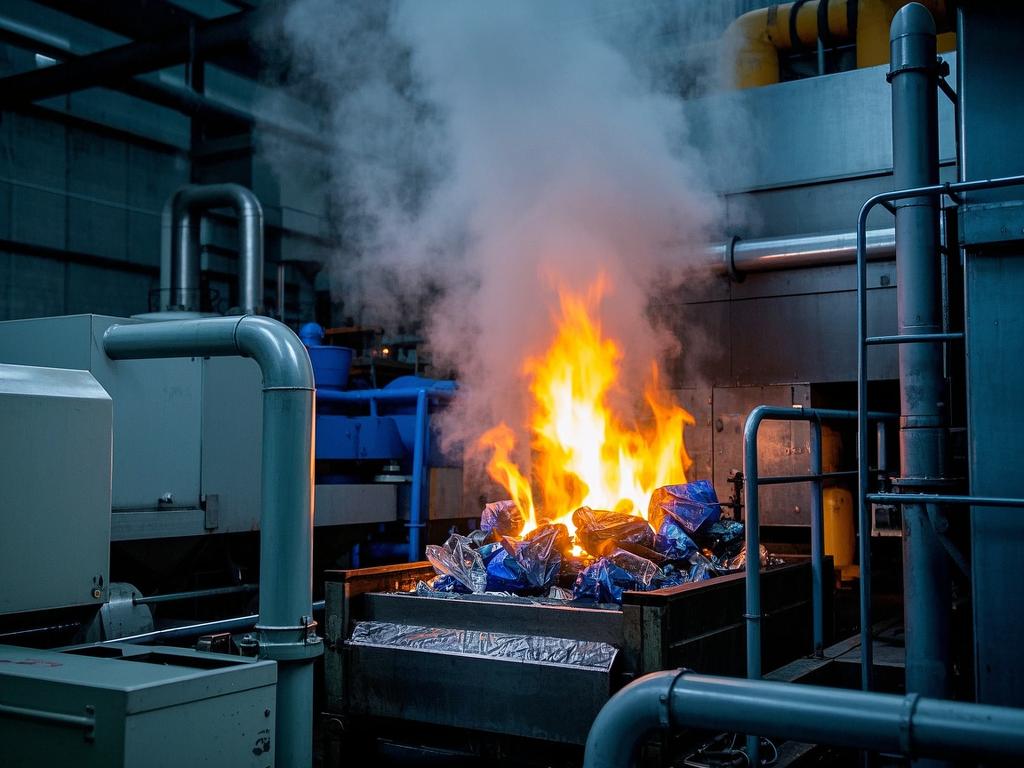
# Renewable Bioenergy from Municipal Solid Waste: Turning Trash into Treasure
Hey there, eco-warriors and curious minds! Today, we're diving headfirst into the fascinating world of turning our stinky, seemingly useless trash into a precious resource: renewable bioenergy from municipal solid waste. Buckle up, because this is one ride you won't want to miss!
## The Trash Tsunami: A Global Crisis
Municipal solid waste (MSW) is piling up faster than we can say "landfill overflow." According to recent data, the world generates a mind-boggling 2.01 billion tons of MSW annually, and that number is projected to skyrocket to 3.4 billion tons by 2050. Yikes! This mountain of trash isn't just an eyesore; it's a ticking time bomb for our environment. Landfills are overflowing, releasing greenhouse gases like methane, a potent contributor to climate change. And let's not even talk about the pollution seeping into our soil, water, and air.
## From Trash to Treasure: The Bioenergy Breakthrough
Enter renewable bioenergy, the superhero of waste management. By harnessing the power of MSW, we can transform this environmental nightmare into a clean, renewable energy source. How? Through a process called anaerobic digestion.
Anaerobic digestion is like a party in a sealed container, but instead of confetti, it's bacteria feasting on organic waste. When MSW, which is rich in organic matter like food scraps, yard waste, and paper, is placed in an anaerobic digester, these bacteria break it down in the absence of oxygen. The end result? Biogas, a mixture of methane and carbon dioxide, which can be used to generate electricity, heat homes, and fuel vehicles.
But the benefits don't stop there. Anaerobic digestion also produces a nutrient-rich byproduct called digestate, which can be used as a fertilizer for agriculture. So, not only are we getting rid of trash, but we're also creating a valuable resource for farmers. It's like killing two birds with one stone!
## A Sustainable Solution for the Future
Renewable bioenergy from MSW is not just a trendy idea; it's a practical solution for a sustainable future. Here are some of the reasons why:
- **Renewable and Clean:** Bioenergy is a renewable resource, meaning it can be continuously produced. Unlike fossil fuels, which are finite and contribute to climate change, bioenergy produces little to no greenhouse gas emissions when burned. - **Waste Reduction:** By diverting MSW from landfills and incinerators, we're reducing the environmental impact of waste disposal. Anaerobic digestion can reduce the volume of MSW by up to 90%, making it a more efficient way to manage our trash. - **Energy Independence:** Producing bioenergy from MSW helps us reduce our dependence on foreign fossil fuels. By using our own waste to generate energy, we can create a more secure and sustainable energy future. - **Economic Benefits:** The bioenergy industry creates jobs in waste collection, processing, and energy production. It also provides a new revenue stream for municipalities and businesses, making it a win-win for the economy and the environment.
## The Challenges Ahead
Of course, turning trash into treasure isn't without its challenges. Here are some of the obstacles we need to overcome:
- **Cost:** The initial investment in anaerobic digestion technology can be high, making it difficult for some municipalities and businesses to afford. However, as the technology becomes more widespread and efficient, the cost is expected to come down. - **Feedstock Quality:** The quality of MSW can vary depending on the location and composition of the waste. To ensure efficient anaerobic digestion, it's important to have a consistent supply of high-quality feedstock. This may require changes in waste collection and sorting practices. - **Public Perception:** Some people may be skeptical about the safety and environmental impact of anaerobic digestion. It's important to educate the public about the benefits of bioenergy and address any concerns they may have.
## Inspiring Success Stories
Despite the challenges, there are already many inspiring success stories of communities and businesses using renewable bioenergy from MSW. For example, in Sweden, more than 90% of the country's MSW is used for energy production. The city of Gothenburg has a state-of-the-art anaerobic digestion plant that produces enough biogas to power 50,000 homes.
In the United States, the city of San Francisco has been a leader in waste diversion and renewable energy. The city's Recology company operates an anaerobic digestion facility that processes over 100,000 tons of food waste and yard trimmings each year, producing enough biogas to power 7,000 homes.
These success stories show that renewable bioenergy from MSW is not only possible but also practical. By learning from these examples and investing in the necessary infrastructure and technology, we can make a significant impact on our environment and our energy future.
## The Call to Action
So, what can you do to help turn trash into treasure? Here are some simple steps you can take:
- **Reduce, Reuse, Recycle:** The first step in waste management is to reduce the amount of waste we generate. By using reusable products, composting food scraps, and recycling as much as possible, we can divert more waste from landfills and incinerators. - **Support Local Bioenergy Projects:** Look for local initiatives that are using renewable bioenergy from MSW. You can support these projects by purchasing products made from recycled materials or by investing in renewable energy. - **Advocate for Policy Change:** Contact your elected representatives and ask them to support policies that promote the use of renewable bioenergy from MSW. By raising awareness and advocating for change, we can help create a more sustainable future for ourselves and for generations to come.
In conclusion, renewable bioenergy from municipal solid waste is a game-changer in the world of waste management and energy production. By turning our trash into treasure, we can reduce our environmental impact, create jobs, and build a more sustainable future. So, let's roll up our sleeves, get to work, and start turning that mountain of trash into a valuable resource. Together, we can make a difference!

